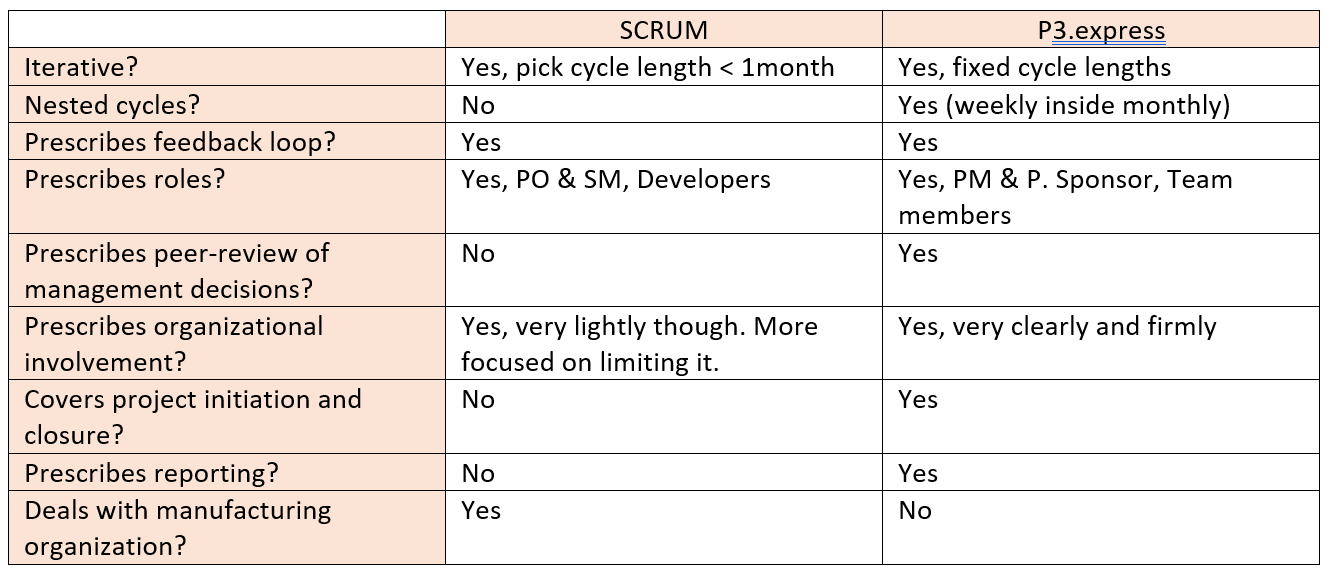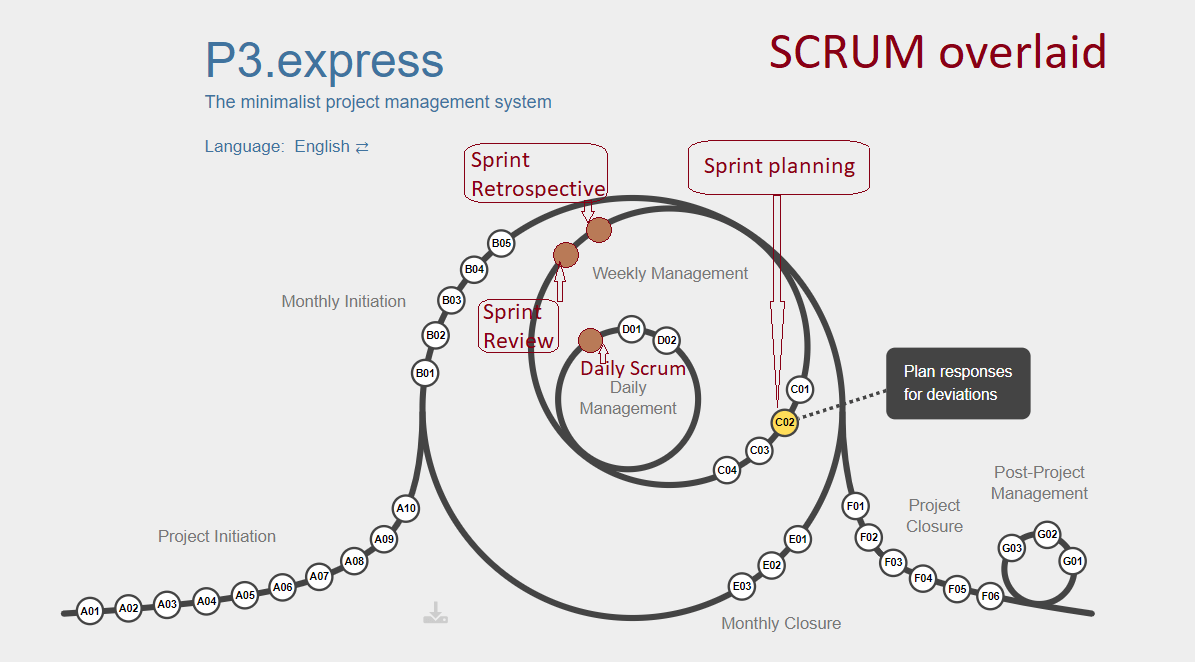A couple of weeks before the event, I was asked by the HTEC Head of PMO Marko Pavlović to look into the methodology, see what I make of it, and in particular, try to gauge if we could use it in HTEC. Below is a summary of my impressions. Given that SCRUM is a "common denominator" for most in our little community, I figured comparing P3 to it will help most of us get a feel of "where it stands" rather quickly.
P3.express – my perception
As a PM whose beginnings track back to PMI’s PMP, I perceived P3.express as a slimmed-down and concretized PMP methodology with a few inspiring twists. See this YouTube video for key points. It goes back to project management reminding everyone of the reality where investments must be justified, or projects cannot be funded at all.What I consider innovative and good:
- It prescribes regular PM peer review after every update of plans (monthly);
- It prescribes minimum involvement of the sponsor (monthly + on escalation);
- It demystifies canceling a project – we should do it more often;
- It prescribes team-building occasions (and they happen monthly, but not all include travel);
- It prescribes making project commitments public to the wider audience on a regular basis (monthly);
- It elegantly condenses essential project management documentation into only 4 documents (Project description, Deliverable map, Follow-up register, Health register);
- It prescribes measuring and reporting performance at the beginning of a cycle (not its end) and adjusting plans accordingly;
- It prescribes monthly stakeholder satisfaction surveys (and keeping records of it);
- It time-boxes and formalizes the follow-up evaluation of the project impact (benefits the product brought or unexpected damage it caused months after the project closure; in the case of canceled projects, it can be verified if cancellation was a good decision).
What is not so innovative, but I find easy to appreciate:
- It prescribes weekly reporting;
- It prescribes weekly updates to the "follow up" register (something like a RAID register);
- It prescribes a weekly "planning" event and subsequent publishing of the plan to the project audience;
- It prescribes a monthly retrospective event (after the monthly stakeholder satisfaction survey);
- It prescribes daily reactive (risks, issues, CRs) and proactive (inspection) activities for the PM.
Comparison to SCRUM
In brief, they are not comparable. SCRUM focuses on product manufacturing. P3.express covers only management steps.Can we run both on the same project? Erm, … I guess so, but either Sprint would have to be 1 week-long, or SCRUM would be getting some extra meetings that suspiciously look like extra Sprint Plannings. And of course, the Product Owner would get an extra role outside of SCRUM (as there are no PMs in SCRUM as we all know), or there would have to be an external program, portfolio, or a project manager following the project the SCRUM team is working on.
Here is a table that may provide an idea of why:

Most obvious way to run both in parallel is to use Scrum Sprints as the weekly cycles P3.express prescribes:

If the sprint lasts 2, 3, or 4 weeks, then the team would have additional "plan adjustment" meetings on the non-initial weeks of the sprint (P3’s "C02" step) which is "waste" in SCRUM, but not strictly forbidden. (As long as the Sprint Goal is untouched.) 3 weeks-long sprints would have another addition: an extra retrospective (step E02 of P3.express) whenever the sprint retro does not coincide with the P3's monthly one, which would be the case for most sprints. In all other cadences, E02 would overlap with one of the regular SPRINT retrospectives.
There are a bunch of other P3.express steps that do not exist in SCRUM, however, they are largely limited to the Project Manager, and do not affect the flow of Sprints (or the SCRUM team).
Final thoughts
One special case not covered here is sprint lengths measured in days rather than weeks, for example, a 3-day sprint. Those appear to be rather rare in practice though.Most importantly though, I think this project management methodology can best fit around a Kanban manufacturing lane. This was confirmed during the mentioned workshop when I popped the question about fitting P3 around SCRUM. (Nader suggested we should rather be looking into combining it with Kanban instead.) And indeed, on re-reading all written above, it would appear that SCRUM would strangle and limit P3 on several points reducing their usefulness, and P3 would add unnecessary load to SCRUM in a few places in return, reducing the overall effectiveness of the team. None of which would be a problem with P3 + Kanban.
I hope this summary will help all of you fellow process-freaks with little previous exposure to P3.express to get your bearings quicker. My feeling is that it holds a rather interesting promise and may prove to be very practical and applicable. That is yet to be tried and proved of course.
Original post on LinkedIn: https://www.linkedin.com/pulse/p3express-vs-scrum-vladimir-mircevski/?trackingId=qYJESfIwT6yj0lO9syvZ9w%3D%3D









